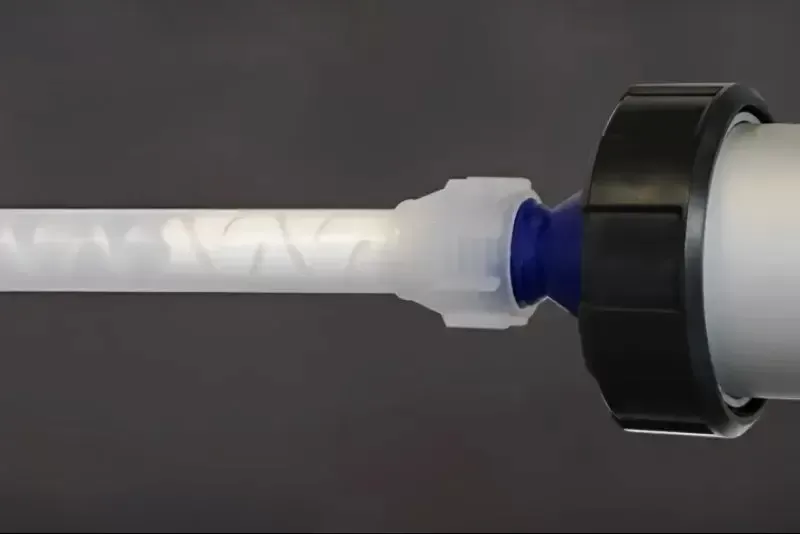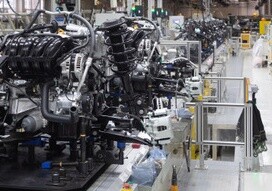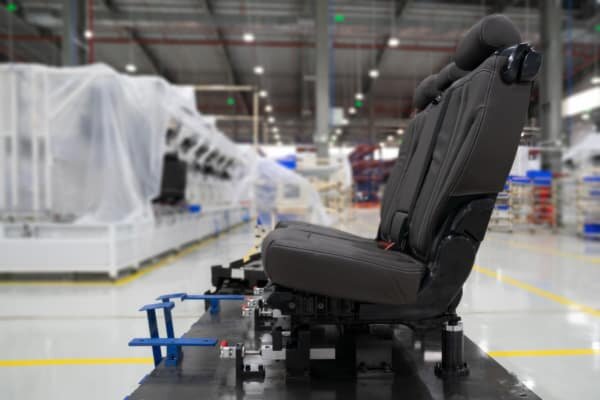Epoxy for substrates with different thermal characteristics

As a service, we offer free adhesives & sealants advice. We know it can be hard to find the best solution for your project. Please leave your details and we will get in touch within 1 day.

Strong-bonding epoxy adhesive for metal and plastic substrates
One of the common truths in manufacturing is that different materials have different properties. Of course, that is exactly why you pick a particular mix of materials. Every material brings along a number of benefits, and sometimes, a few problems, too.
Probably the most obvious problem is the fact that every material has its own set of characteristics that is affected by temperature changes. Even when their properties still remainwithin your requirements for that particular item, one thing often does change: their physical size.
Materials tend to stretch when heated up, and shrink when cooled down. This wouldn’t be a problem if different materials would behave exactly the same under similar conditions. But, as we all know, they don’t.
When a mix of substrates is bonded with a low or medium strength adhesive, those little differences in stretch or shrinkage will tear the bond, or the substrates, sooner or later. This problem may be exacerbated by differences in substrate thickness. The combination of these elements can become a real manufacturing nightmare.
Does your production line require a high-tech and high-strength epoxy adhesive that can bond a mix of similar or dissimilar substrates, while maintaining a gas-tight and moistureproof protective seal?
Contact us for more information.
So, now you have the challenge of finding the solution to your production nightmare. You know what you need: a high-strength metal to plastic glue that can bond similar and dissimilar substrates together without failing under changing temperatures. Though ‘glue’ is quite the oversimplification when it comes to such a high-tech adhesive.
In general, you’ll find two groups of adhesives. One group is developed to do many things in an acceptable way, the other does one thing extremely well. But how do you pick the right one for your application? You don’t want to try out all of them.
As said, the puzzle is a lot harder to crack when not only the properties of the materials are completely different, but also their thickness forms a defining element in your application.
Before you know it, you end up with a different adhesive for each job. But that will probably introduce a whole new set of issues.
Having to use a range of adhesives will not only burden your buyer and your company inventory manager. It also may add to workplace accidents and increase the number of damaged and useless finished products.
Any experienced manager will know that such a wide variety of adhesives in a workplace will –invariably – lead to application issues. Different adhesives often require different application methods, and sometimes different equipment too. And with two-component adhesives – alsoknown as reactive adhesives – there’s always the possibility that someone accidentally uses the wrong mixing ratio.
The bigger the number of different adhesives in manufacturing environments, the higher the chances of people making mistakes. And guess who ends up paying for the loss?
High-strength adhesive that lets others play well together
There are high-strength adhesives out there that can take care of this nightmare for you. They can glue similar materials together, but also metal to plastic, or plastic to metal. Aluminium (or aluminium, if you’re from Europe), various plastics, rigid vinyl, regardless of the properties of the substrate.
We can find you an epoxy that will achieve an extremely strong bond that can withstand the different thermal expansion properties of the substrates.
On top of that, it will also turn into a gas-tight and moisture-proof seal, forming a protective layer that is insensitive to chemicals and moisture. Adhesion, sealing, protecting; what’s not to like?
Another factor is the ease of application. You want something that has the right thixotropic properties. Preferably with little to no run-off, regardless of the application and layer thickness. An epoxy that you can apply as a thin or thick-film coating would dramatically increase the range of applications and industries it can be used in.
Epoxy adhesive and sealant for in-place laminates of various properties
There’s one thing your application may require that we haven’t mentioned yet. In some cases, the seal between the substrates must not only be gas-tight and moisture-proof, but also shock resistant. By forming a semi-rigid bond, the epoxy also provides resistance to plastic creep, ensuring a sturdy resistance to vibration, impact and thermal shock.
All these properties add up to a formidably versatile epoxy adhesive sealant. While such an adhesive would be particularly suitable for adhering in-place laminates, it may not be limited to that application alone. And the best news is that adhesives+coatings knows which adhesive you need.
We know where you can find the best high-tech sealants and adhesives for your application. If you have special application needs and seek advice, contact us. We’re glad to help you on your way.

What solution are you looking for?
We are specialized in the transportation and automotive industry. Need the best products or advice? Then please leave your details and we will get in touch.





